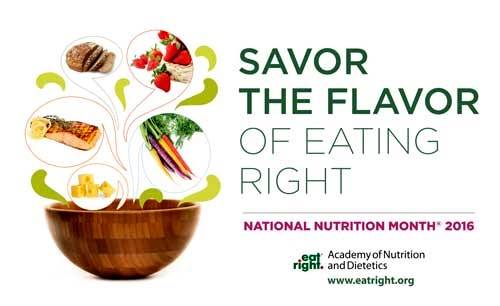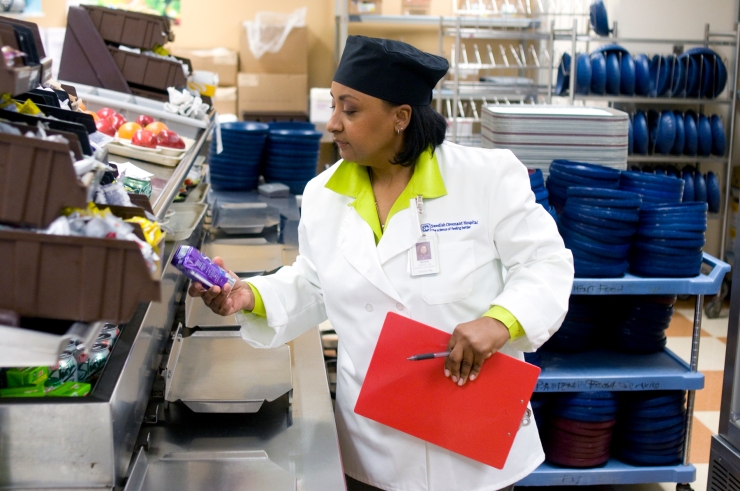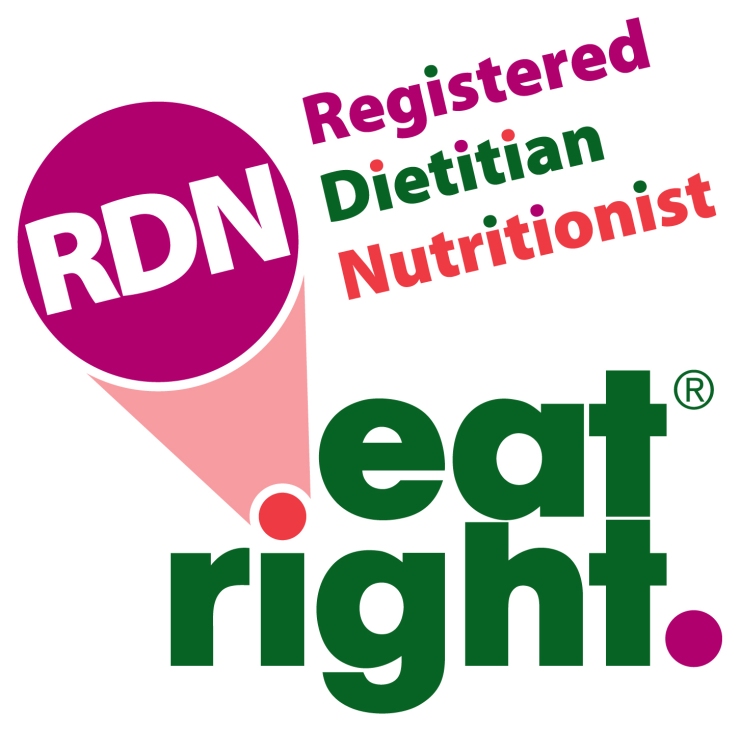I couldn’t let National Nutrition Month® go by without sharing my thoughts on this year’s theme: “Savor the Flavor of Eating Right.” The Academy of Nutrition and Dietetics, the professional organization for dietetic professionals, is the sponsor of this annual event, and it’s no surprise that each year’s theme is often some kind of build off the organization’s catchphrase: Eat Right. (The website URL for the Academy of Nutrition and Dietetics is, in fact, eatright.org).
I love the first part of the tagline: savor the flavor. It jives with my philosophy toward food: that eating is not just about nutrition but that it’s an experience, a source of enjoyment and a sense of culture. I feel strongly that when eating people should take note of all five senses: the sound of the sizzling stovetop, the smell of a dish that evokes a childhood memory, the look of a well-plated meal, the feel and texture of the food on your tongue, and of course, the taste! It’s when we fail to engage all senses that we find ourselves eating mindlessly, which can lead to unhealthy habits.
It’s the second part of the phrase that rubs me the wrong way: eating right. It implies a dichotomy: right vs. wrong. Good vs. bad. Pure vs. poison. No wonder people think of dietitians as the food police. The last thing people want to be told is that they’re eating wrong. Don’t even get me started how finger pointing like that can lead to disordered eating and views toward foods…
If I were in charge, I’d change the Academy URL and all associated phrasing to eating better. There is always room for improvement, no matter how healthful you diet may be already. There are plenty of other choices to make, foods to try, small steps to take. There is no perfect healthy eating plan (because then the food police will knock on your door and tell you to get some variety, for goodness’ sake!)
Think of it this way: when I introduce myself as a dietitian at a dinner event, people tend to get uncomfortable and say things like, “please don’t look at my plate!” I tend to say back to them, “don’t look at mine either!” This is one meal, on one day, and most likely a special occasion. This is not my everyday pattern.
If there is a definition of eating “right,” to me that means making more nutrient-packed choices and staying within your energy (calorie) needs. But it also means enjoying a rich dish or decadent dessert – heck, maybe even daily – so long as it’s portioned right and within a framework of an overall healthy eating pattern and lifestyle.











